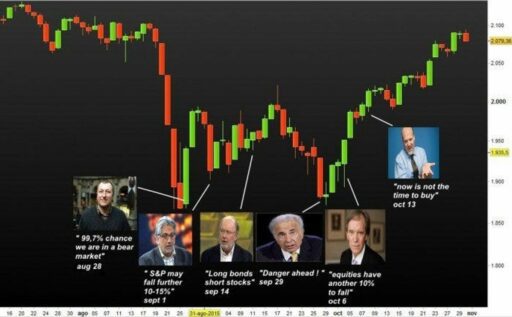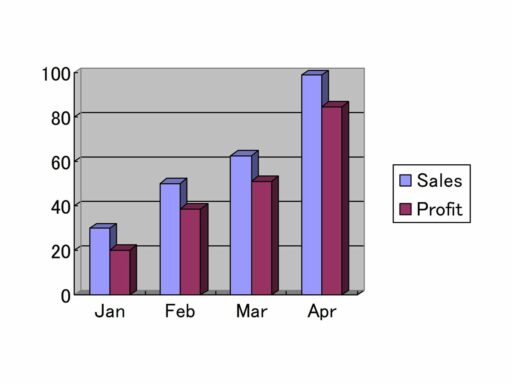Investors face significant challenges when navigating a stock market crash. Such events can lead to heightened uncertainty, emotional stress, and financial turmoil. However, with the right strategies and mindset, investors can mitigate risks and even find opportunities during these downturns. This article explores practical approaches to managing investments when the market takes a downward turn, offering insights into understanding the impact, assessing risk, maintaining liquidity, making informed decisions, and seeking professional advice.
Key Takeaways
- Understanding historical market downturns can provide valuable insights and help maintain perspective during a crash.
- Diversification across asset classes, sectors, and geographies is crucial to mitigate risks in volatile markets.
- Maintaining liquidity and cash reserves is essential to cover emergencies and capitalize on investment opportunities during a downturn.
- Investors should be aware of emotional biases and exercise discipline to avoid panic selling and make rational decisions.
- Consulting with financial advisors and staying informed through reputable research can guide investors through market turbulence.
Understanding the Impact of a Stock Market Crash


Historical Perspectives on Market Downturns
Understanding the patterns and outcomes of past stock market crashes is crucial for investors trying to navigate the treacherous waters of a financial downturn. Historical data shows that while the market has experienced significant declines, it has also demonstrated a remarkable ability to recover over time.
- The Great Depression (1929): A severe worldwide economic depression that took a decade for the stock market to recover.
- Black Monday (1987): The largest one-day percentage decline in stock market history, yet the markets rebounded relatively quickly.
- The Dot-com Bubble (2000): A period of excessive speculation in internet-related companies, followed by a market correction.
- The Financial Crisis (2008): Triggered by the collapse of the housing bubble, it led to a prolonged period of market volatility.
- The COVID-19 Crash (2020): A rapid and steep decline due to the global pandemic, with a swift recovery aided by unprecedented fiscal and monetary policy measures.
While each crash has its unique causes and effects, the resilience of the market is a common thread that provides a measure of hope during times of economic stress.
Psychological Effects on Investors
The tumultuous nature of a stock market crash can have profound psychological effects on investors, often leading to emotional decision-making. The fear of loss and the uncertainty of recovery can cause stress levels to rise, impacting not only investment choices but also overall well-being.
- Emotional responses to market conditions can range from panic to overconfidence.
- Investors may experience decision paralysis, unable to make or change investment choices.
- The phenomenon of loss aversion is heightened, where the pain of losses feels more intense than the pleasure of gains.
Maintaining a level head and adhering to a pre-defined investment strategy can mitigate the impact of these psychological effects.
Research has shown that the psychological health of investors is directly affected by market fluctuations. We confirm that portfolio losses, not local economic conditions, are responsible for increased antidepressant usage during market downturns. This underscores the importance of mental health considerations in financial planning and the need for strategies that can withstand the emotional rollercoaster of a market crash.
Short-Term vs. Long-Term Market Views
Investors often grapple with the decision of whether to focus on short-term fluctuations or to adopt a long-term perspective during a stock market crash. Short-term market views can lead to reactive decision-making, often influenced by the emotional turmoil of a crash. On the other hand, a long-term approach emphasizes the historical resilience of markets and the potential for recovery over time.
- Short-term view: Prone to emotional biases, may result in frequent trading and higher costs.
- Long-term view: Encourages patience, aligns with historical market recovery trends.
It’s crucial for investors to recognize that market timing, while tempting, is rarely a successful long-term strategy. The allure of ‘buying low and selling high’ can often lead to missed opportunities and increased risk.
Understanding the difference between these two perspectives is essential for developing a sound investment strategy. While the short-term view may seem compelling during volatile periods, it’s the long-term view that often aligns more closely with the overarching goals of wealth accumulation and financial stability.
Assessing Risk and Diversification Strategies


The Role of Asset Allocation
Asset allocation is the process of spreading investments across various asset classes, such as stocks, bonds, and cash, to manage risk and potential returns. The key to successful asset allocation is aligning it with your individual risk tolerance and investment goals.
- Stocks offer growth potential but come with higher volatility.
- Bonds provide income and stability, often balancing the risks associated with stocks.
- Cash and cash equivalents, like money market funds, offer liquidity and safety.
Proper asset allocation can mitigate risks during market downturns and capitalize on growth during recoveries.
Revisiting and adjusting your asset allocation is crucial, especially during a market crash, as the relative value of your assets can change significantly. This may involve shifting towards more conservative investments or taking advantage of lower prices to increase equity exposure.
Diversification Across Sectors and Geographies
In the face of market volatility, diversification is a key strategy for mitigating risk. By spreading investments across various sectors and geographical regions, investors can reduce the impact of a downturn in any single area. Mutual funds, for instance, offer a convenient way to achieve this diversification, as they are professionally managed portfolios that include a mix of stocks, bonds, or other securities from different locations and industries.
Diversification does not guarantee profits or protect against loss, but it can be an essential component in managing investment risk.
It’s important to recognize that different sectors and regions will react differently to economic changes. For example, while tech stocks may be booming, other sectors like utilities or healthcare might be more stable during a downturn. Similarly, emerging markets may offer growth potential but come with higher volatility compared to developed markets. Here’s a simple breakdown of how diversification can be structured:
- Sector Diversification: Technology, Healthcare, Utilities, Consumer Goods, Financials
- Geographical Diversification: North America, Europe, Asia-Pacific, Emerging Markets
By balancing your portfolio across these dimensions, you can create a more resilient investment strategy that is better equipped to handle the uncertainties of a stock market crash.
Rebalancing Portfolios in Volatile Markets
During periods of market volatility, rebalancing your portfolio is a critical step to align your investments with your risk tolerance and financial goals. Rebalancing ensures that your asset allocation remains in line with your intended investment strategy, even as market fluctuations may have shifted the weightings of your assets.
- Review your investment strategy and risk tolerance.
- Assess the current asset allocation against the target allocation.
- Sell over-weighted assets and buy under-weighted assets to realign with your strategy.
Rebalancing can help investors avoid the emotional pitfalls of market timing and maintain discipline in their investment approach. It’s a proactive measure to manage risk and potentially capitalize on market movements.
Frequent market shifts can lead to opportunities where certain asset classes become undervalued. By rebalancing, investors can systematically take advantage of these situations to adjust their portfolios, potentially improving returns over the long term.
The Importance of Liquidity and Cash Reserves


Maintaining Access to Emergency Funds
During turbulent financial times, maintaining access to emergency funds is crucial for investors. These funds serve as a financial safety net, ensuring that you can cover unexpected expenses without the need to liquidate investments at a loss during a market downturn.
- Create a liquid emergency fund: Aim for 3-6 months of living expenses.
- Separate from investments: Keep your emergency fund in a separate, easily accessible account.
- Regular contributions: Treat your emergency fund as a non-negotiable expense and contribute regularly.
Ensuring that your emergency fund is sufficient and accessible can provide peace of mind and prevent the need for drastic financial decisions in the face of a stock market crash.
Cash Reserves as a Buffer During Market Crashes
During turbulent times in the stock market, having a cash reserve can be a critical safety net for investors. This liquidity serves as a buffer, allowing individuals to cover living expenses and emergencies without the need to liquidate investments at a loss.
Maintaining cash reserves is particularly important when the market is volatile, as it provides a level of financial security and peace of mind. It also positions investors to take advantage of lower asset prices, should they choose to ‘buy the dip’. However, it’s essential to balance the amount kept in cash to avoid missing out on potential market gains.
Cash reserves should not be so large that they significantly drag on investment performance, nor so small that they fail to provide a sufficient safety net.
Here’s a simple guideline for considering cash reserve levels:
- Evaluate current living expenses and set aside an emergency fund covering 3-6 months.
- Determine the amount of cash needed for short-term goals or upcoming expenditures.
- Keep a portion of cash available for investment opportunities that may arise during market downturns.
Opportunities for Buying the Dip with Cash on Hand
Having cash reserves during a market crash can be a strategic advantage for investors looking to capitalize on lower asset prices. Buying the dip can be an opportunity to purchase stocks at a discount, potentially leading to significant gains when the market recovers.
- Evaluate the market conditions and ensure it aligns with your investment strategy.
- Identify fundamentally strong companies that are likely to recover post-crash.
- Determine the right amount to invest without compromising your financial stability.
While timing the market is challenging, having cash on hand provides the flexibility to make opportunistic purchases when prices are depressed.
It’s crucial to approach this strategy with caution and to avoid the temptation to invest impulsively. A disciplined approach to buying the dip can contribute to a well-rounded investment portfolio.
Behavioral Finance and Decision Making


Recognizing Emotional Biases
In the tumultuous environment of a stock market crash, investors are prone to emotional biases that can cloud judgment and lead to suboptimal decisions. Recognizing these biases is crucial for maintaining a clear-headed approach to investing. Emotional biases often manifest as a tendency to overvalue personal experiences over statistical realities.
- Confirmation bias: Seeking information that supports one’s beliefs while ignoring contrary evidence.
- Overconfidence: Believing in one’s ability to predict market moves accurately, often leading to increased risk-taking.
- Loss aversion: The fear of losses can be so strong that it prevents rational decision-making, even when potential gains outweigh the risks.
Maintaining an awareness of these biases can help investors avoid common pitfalls and adhere to their investment strategies, even in the face of market volatility.
Strategies to Avoid Panic Selling
During a stock market crash, the instinct to sell can be overwhelming. Developing a pre-defined trading plan can help investors maintain composure and avoid panic selling. This plan should outline specific scenarios and the corresponding actions to take, reducing the need for on-the-spot decision making under stress.
- Set Stop-Loss Orders: Establish stop-loss orders to automatically sell assets at a predetermined price, limiting potential losses.
- Regularly Review Investment Goals: Remind yourself of your long-term financial goals to stay focused beyond the current market turmoil.
- Practice Emotional Discipline: Train yourself to detach from the emotional rollercoaster of market fluctuations.
Maintaining a clear head and adhering to a strategic plan can be the bulwark against the tidal wave of panic that crashes over the market during downturns.
It’s also crucial to recognize the signs of market recovery and to resist the urge to sell in a knee-jerk reaction. By staying informed and sticking to your investment strategy, you can navigate through the volatility and potentially emerge in a stronger financial position.
The Role of Discipline in Investment Decisions
In the tumultuous world of investing, discipline stands as the bedrock of sound decision-making. It’s the disciplined investor who can navigate the stormy markets with a steady hand, adhering to a well-thought-out investment strategy even when emotions run high. Patience and discipline are two key virtues that can greatly contribute to your success as an investor.
Discipline is not just about sticking to a plan; it’s about having the foresight to create flexible strategies that can withstand market volatility.
Developing a disciplined approach involves several key steps:
- Establishing clear investment goals
- Creating a comprehensive investment plan
- Sticking to the plan despite market noise
- Regularly reviewing and adjusting the plan as necessary
By understanding and harnessing the power of discipline, investors can avoid the pitfalls of emotional decision-making and maintain a long-term perspective that is often required for investment success.
Leveraging Expertise and Financial Advice


Consulting with Financial Advisors
In the tumultuous times of a stock market crash, consulting with financial advisors can be a beacon of stability for investors. Financial advisors provide tailored advice that aligns with your investment goals and risk tolerance, helping to navigate the complex decisions that arise during market downturns.
- Analyzing the situation: Financial advisors can offer a comprehensive analysis of the market and your portfolio’s position within it.
- Sticking to your investment plan: Advisors encourage discipline, ensuring that short-term market fluctuations do not derail long-term investment strategies.
- Diversifying your portfolio: They can assist in adjusting your asset allocation to mitigate risks.
- Avoiding timing the market: Advisors warn against the pitfalls of trying to predict market movements, which can lead to significant losses.
- Seeking professional advice: A crucial step in preserving capital and finding opportunities amidst the chaos.
Maintaining a level-headed approach during a crash is essential. Financial advisors can help investors avoid making hasty decisions that are often regretted when markets rebound.
The Benefits of Robo-Advisors During Market Turmoil
During periods of market volatility, investors often seek cost-effective and reliable ways to manage their portfolios. Robo-advisors have emerged as a valuable tool in such times, offering automated investment management services at a fraction of the cost of traditional advisors. Their algorithm-driven strategies can help maintain a disciplined approach to investing, which is crucial when emotions run high.
Robo-advisors are particularly adept at implementing diversification and rebalancing strategies efficiently. Here’s how they can benefit investors during market crashes:
- Cost-Efficiency: Lower fees compared to traditional investment services.
- Consistency: Algorithmic trading removes emotional decision-making.
- Accessibility: Easy to use platforms with 24/7 availability.
- Adaptability: Quick response to market changes with automatic rebalancing.
Maintaining a level-headed approach during a stock market crash is essential. Robo-advisors can provide the necessary support to navigate through the turbulence without succumbing to panic selling or other emotional responses.
The integration of advanced technologies like Artificial Intelligence not only optimizes investment strategies but also personalizes the experience for individual investors. As the market landscape evolves, the role of robo-advisors is likely to expand, offering a blend of sophistication and simplicity that can be particularly valuable in uncertain times.
Staying Informed Through Reputable Investment Research
In the wake of a stock market crash, staying informed is crucial for making sound investment decisions. Investors should prioritize gathering information from reputable sources to avoid misinformation that can exacerbate market panic. Establishing a routine for consuming financial news and analysis helps maintain a clear perspective, especially during volatile periods.
- Set Specific Goals: Define clear investment goals and objectives to focus your research and information gathering efforts.
- Evaluate Sources: Assess the credibility of financial news outlets and research firms before relying on their data.
- Utilize Tools: Leverage financial tools and platforms that offer real-time data and in-depth analysis.
Maintaining a disciplined approach to investment research is essential. It ensures that decisions are based on data and expert insights, rather than rumors or emotional reactions.
Conclusion
As we navigate the turbulent waters of a stock market crash, investors are faced with the daunting task of making decisions amidst uncertainty. The strategies outlined in this article provide a roadmap for weathering the storm: staying informed, diversifying portfolios, considering long-term goals, and not succumbing to panic selling. It’s also crucial to remember that market downturns can present opportunities for those who are prepared. By adhering to a disciplined investment approach and maintaining a level head, investors can not only safeguard their assets but also position themselves for recovery and growth when the market eventually rebounds. In times of financial upheaval, the principles of patience, prudence, and perspective are more valuable than ever.
Frequently Asked Questions
What are the long-term effects of a stock market crash on investors?
Long-term effects can include market recovery and potential for growth, but also lasting changes in investor behavior, such as increased risk aversion and a shift towards more conservative investment strategies.
How can investors effectively diversify their portfolio to mitigate risks during a market crash?
Investors can diversify by spreading their investments across different asset classes, sectors, and geographies, which can help protect against losses in any one particular area of the market.
Why is liquidity important during a stock market downturn?
Liquidity is crucial because it provides investors with the flexibility to cover unexpected expenses or take advantage of investment opportunities without having to sell assets at a loss during a market downturn.
How can behavioral finance inform investment decisions during a market crash?
Behavioral finance helps investors recognize and counteract emotional biases, such as panic selling or herd behavior, enabling more rational and disciplined decision-making during market volatility.
What role do financial advisors play during times of market turmoil?
Financial advisors can provide expert guidance, reassurance, and tailored strategies to help investors navigate market crashes and align their portfolios with their long-term financial goals.
Is it advisable to ‘buy the dip’ during a market crash?
Buying the dip can be a strategy for investors with a long-term perspective and sufficient cash reserves, but it requires careful consideration of individual risk tolerance and market conditions.





